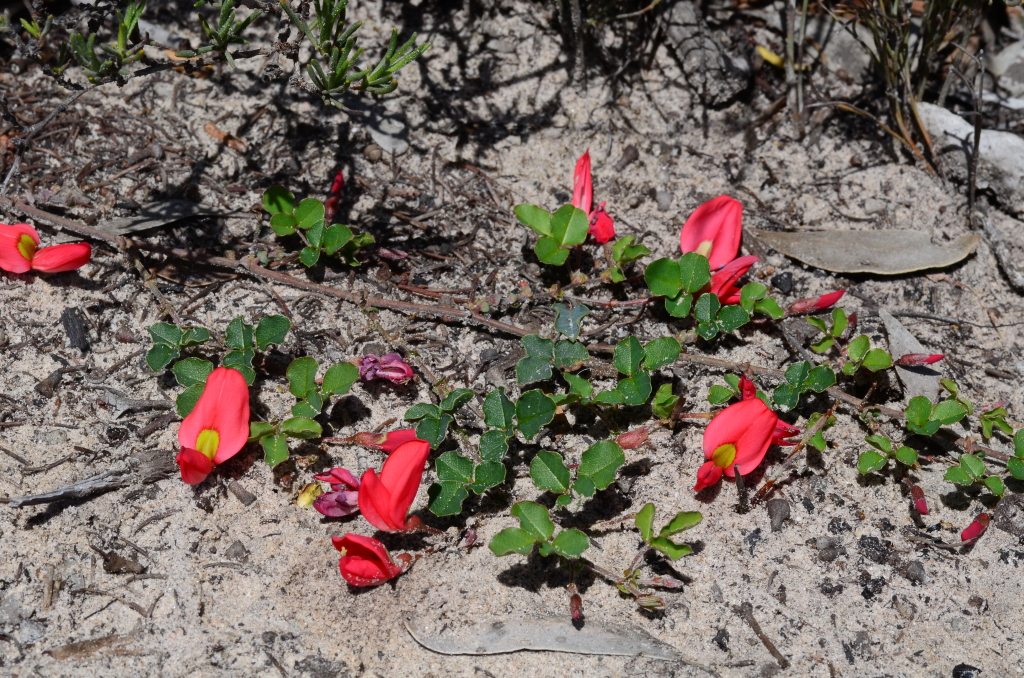Kennedia prostrata
R.Br. Running PostmanProstrate or rarely twining herb; stems wiry, to 2 m long or more, hirsute at first, glabrescent later. Leaflets orbicular to broad-obovate, 6–35 mm long, 6–35 mm wide, upper surface more or less glabrous, lower surface pubescent, apices often notched, sometimes mucronate; petiole 0.5–5 cm long; lateral leaflets subsessile; upper leaflet on petiolule 2–9 mm long; stipules cordate, c. 5 mm long, leafy; stipellae filiform, c. 2 mm long. Flowers usually 1 or 2; peduncle 5–30 mm long; pedicel 5–25 mm long; bracts 2–5 mm long, pubescent, persistent; calyx 6–8 mm long, pubescent; corolla 15–25 mm long, scarlet, rarely white; standard obovate with a yellow basal callus; wings shortest; keel nearly as long as standard. Pod more or less cylindric, 20–50 mm long, 5–8 mm wide, pubescent; seeds 5–8, ovoid, 3–4 mm long. Flowers mostly Aug.–Nov.
LoM, MuM, Wim, GleP, Brid, VVP, VRiv, MuF, GipP, OtP, WaP, Gold, CVU, GGr, DunT, NIS, EGL, EGU, WPro, HSF, HNF, OtR, Strz, HFE. All states except NT. Widespread and often locally common throughout much of Victoria where found in a variety of habitats.
Jeanes, J.A. (1996). Fabaceae. In: Walsh, N.G.; Entwisle, T.J., Flora of Victoria Vol. 3, Dicotyledons Winteraceae to Myrtaceae, pp. 663–829. Inkata Press, Melbourne.
 Spinning
Spinning


